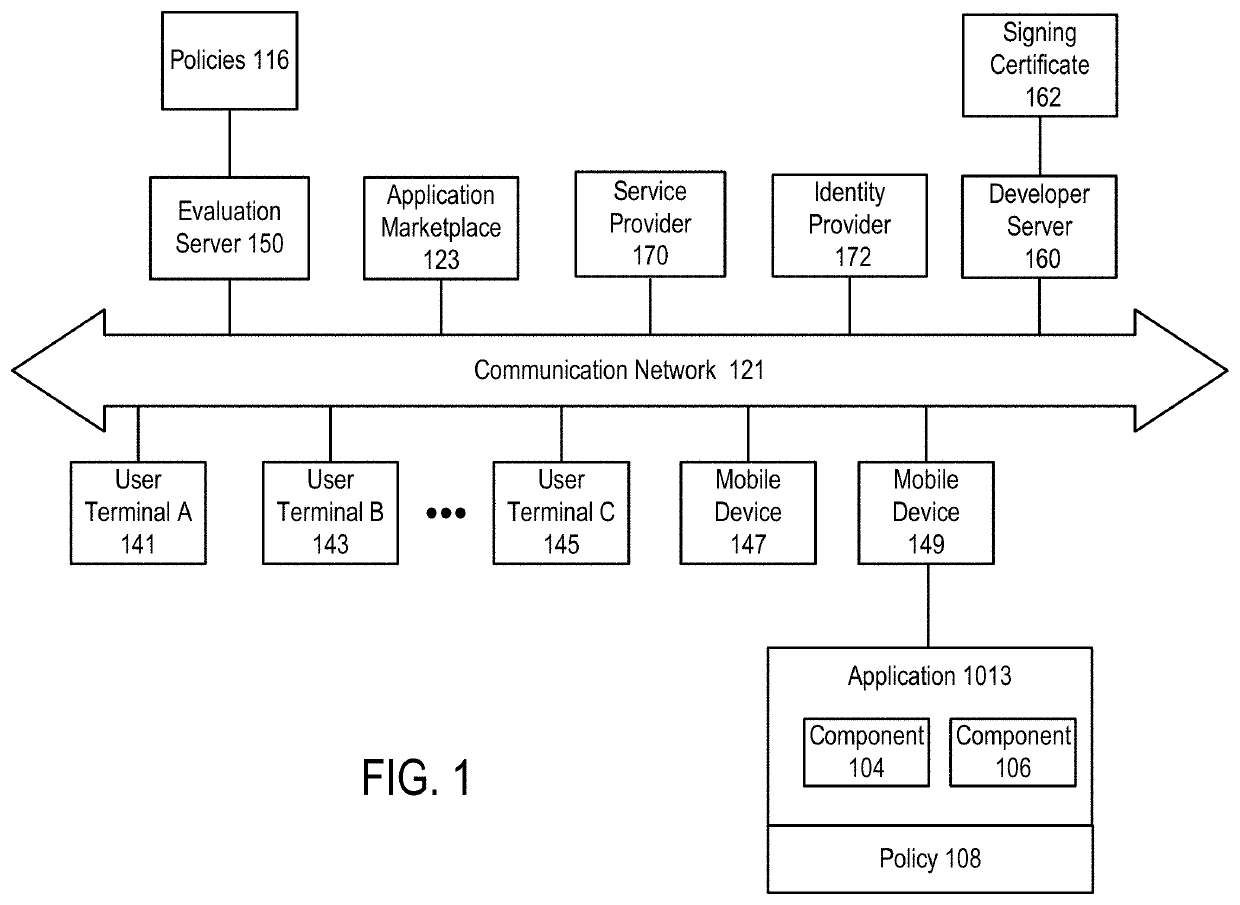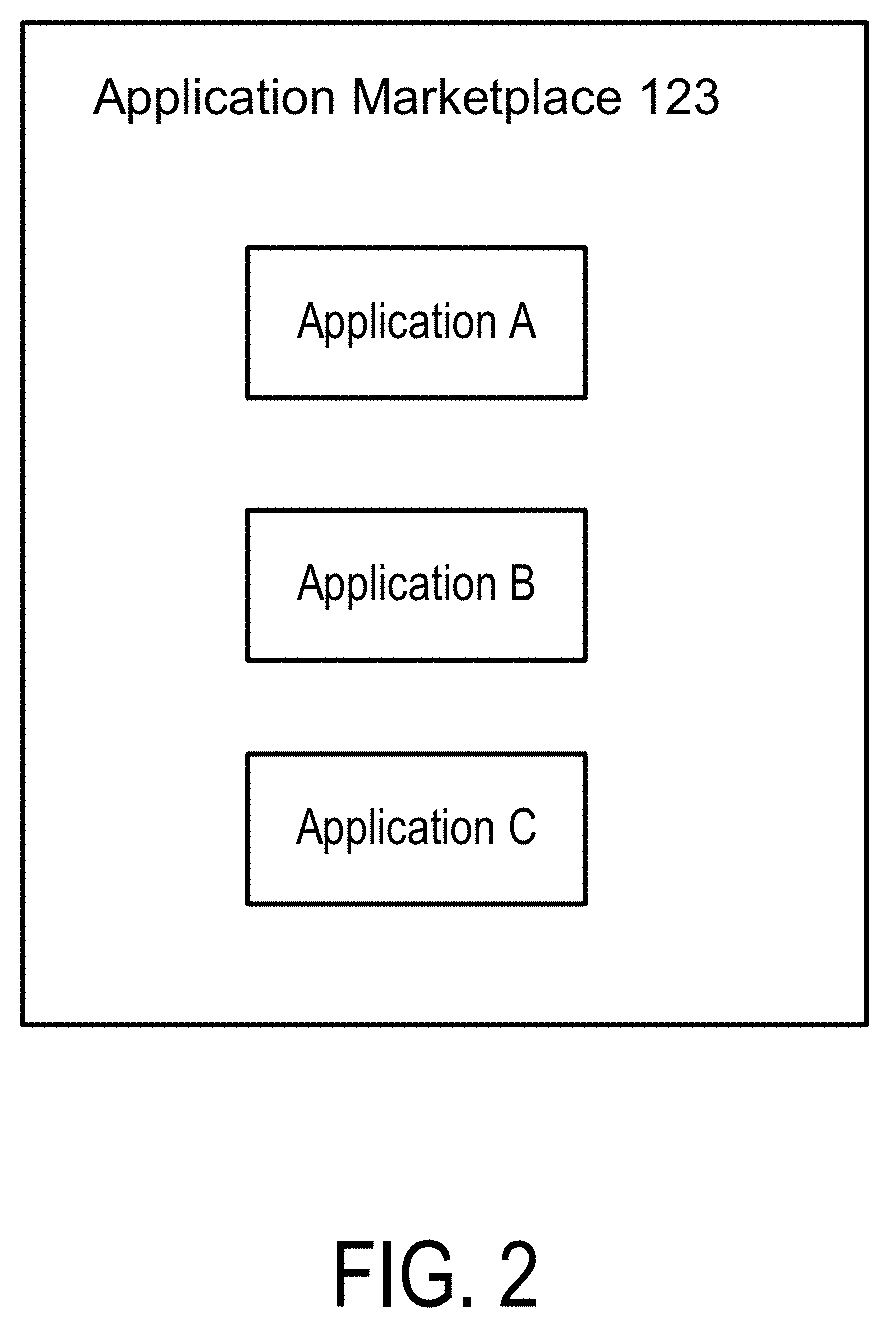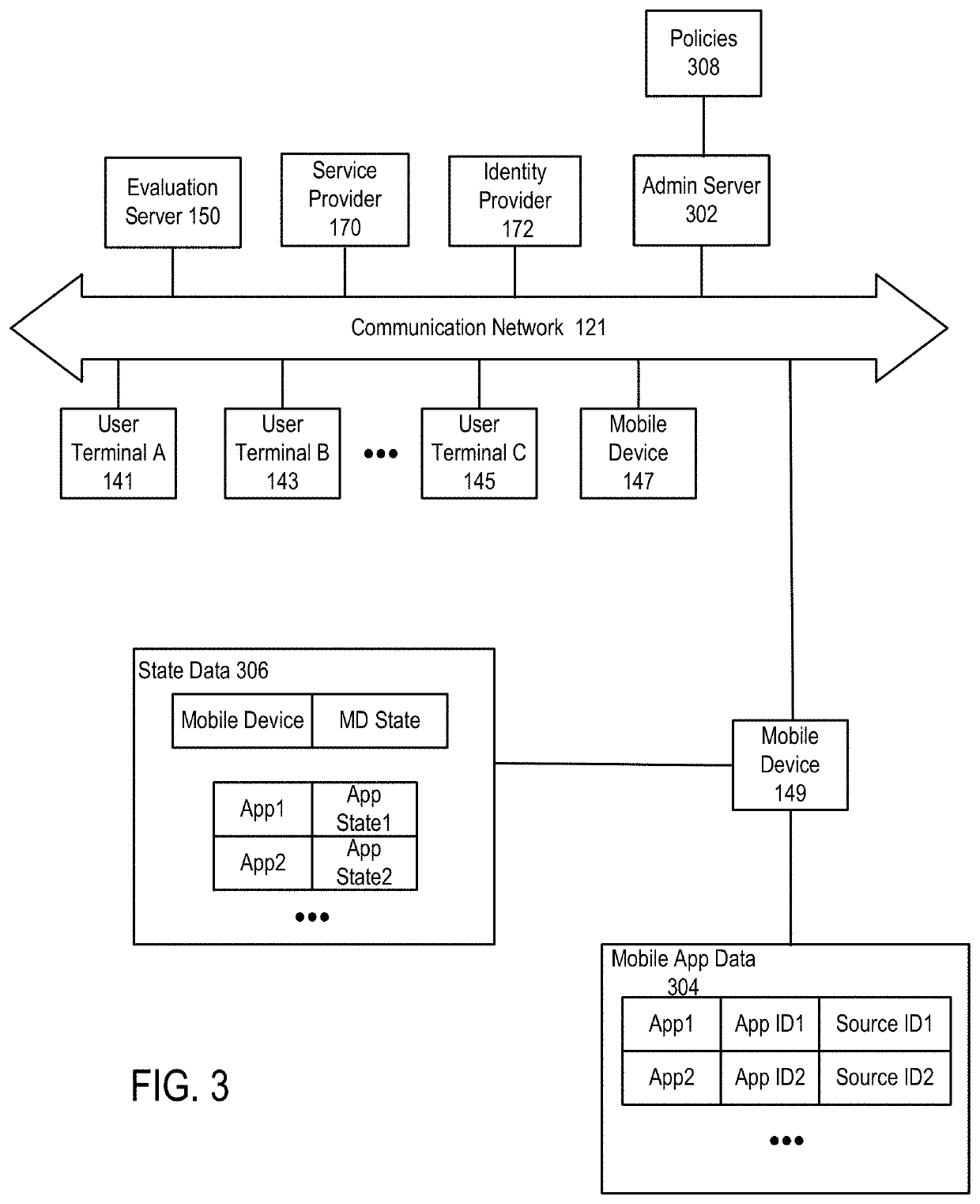Quarantine of software based on analysis of updated device data
a software and device data technology, applied in the field of security evaluation of computer systems, can solve the problems of increasing the risk of malware or other undesirable software being installed, untrustworthy or even a known bad source of software, and the bittorrent protocol providing no way to index torrent files
- Summary
- Abstract
- Description
- Claims
- Application Information
AI Technical Summary
Benefits of technology
Problems solved by technology
Method used
Image
Examples
first embodiment
[0295]In a first embodiment, an application has been installed (or in other cases will be or is planned to be installed) on a mobile device (e.g., mobile device 149) and a determination is made whether the source of the application is from an untrusted channel. For example, for an application on an Android mobile device, the application has been obtained from a source other than the Google Play Store.
[0296]Various use cases 1.1-1.6 are described below (pseudocode is used in portions of the discussion below for ease of explanation). These use cases relate to various situations in which one or more applications (sometimes referred to simply as an “app”) are to be installed on, are already installed on or otherwise interact with, or are intended for use on or with a mobile device. These applications may be tested in various ways as described below. In particular, use cases 1.5-1.6 relate to allowing or disallowing a side-loaded application. In some cases, this allowing or disallowing m...
casee
[0757]In this embodiment, the Ad Network Detector application provides information to the user to about practices supporting mobile advertising. The application may detect many ad networks. Some of the ad networks detected may include the following examples:[0758]LeadBolt[0759]AdFonic[0760]AdKnowledge[0761]AdMob[0762]BuzzCity[0763]Casee[0764]Everbadge[0765]JumpTap
[0766]Regarding ad network capabilities and privacy, in this embodiment the capabilities and information collection methods specific to each ad network may be investigated. Based on this investigation, the Ad Network Detector application details what identifying information is collected by each ad network, and how it is collected. This may include personal information directly linkable to an individual user, such as an email address, and device and network information that is specific to an individual device or network, rather than to the user.
[0767]In one embodiment, a screen is presented by an installed application (e.g. ...
PUM
 Login to View More
Login to View More Abstract
Description
Claims
Application Information
 Login to View More
Login to View More - R&D
- Intellectual Property
- Life Sciences
- Materials
- Tech Scout
- Unparalleled Data Quality
- Higher Quality Content
- 60% Fewer Hallucinations
Browse by: Latest US Patents, China's latest patents, Technical Efficacy Thesaurus, Application Domain, Technology Topic, Popular Technical Reports.
© 2025 PatSnap. All rights reserved.Legal|Privacy policy|Modern Slavery Act Transparency Statement|Sitemap|About US| Contact US: help@patsnap.com



